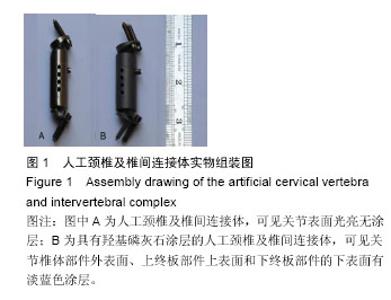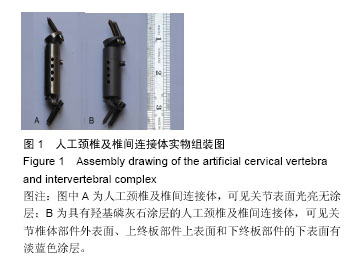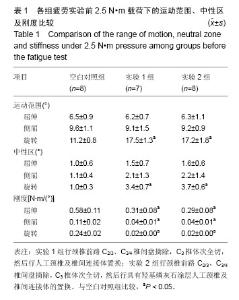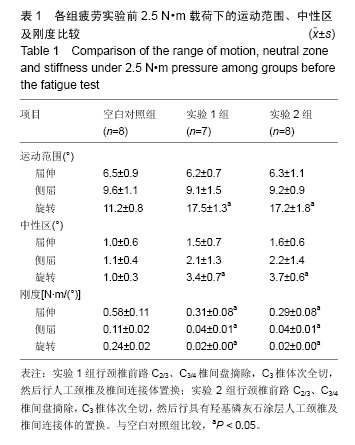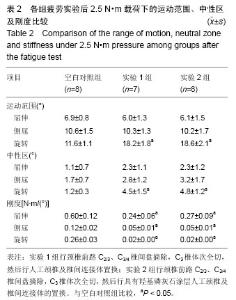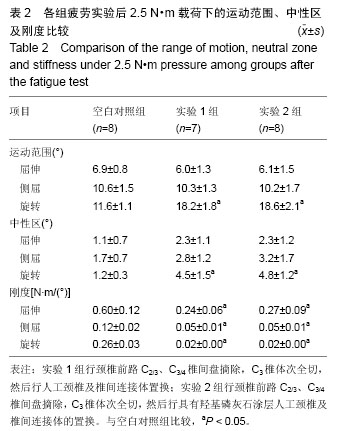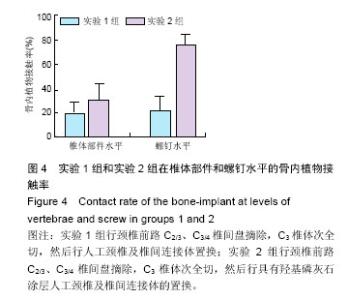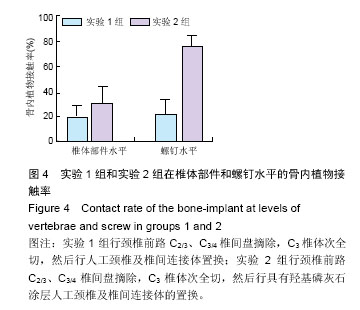| [1]Eck JC,Humphreys SC,Lim TH,et al.Biomechanical study on the effect of cervical spine fusion on adjacent-level intradiscal pressure and segmental motion.Spine (Phila Pa 1976).2002;27(22):2431-2434.
[2]Auerbach JD,Wills BP,McIntosh TC,et al.Evaluation of spinal kinematics following lumbar total disc replacement and circumferential fusion using in vivo fluoroscopy. Spine (Phila Pa 1976). 2007;32(5):527-536.
[3]Cakir B,Carazzo C,Schmidt R,et al.Adjacent segment mobility after rigid and semirigid instrumentation of the lumbar spine.Spine (Phila Pa 1976).2009;34(12): 1287-1291.
[4]Galbusera F,Bellini CM,Raimondi MT,et al.Cervical spine biomechanics following implantation of a disc prosthesis].Med Eng Phys.2008;30(9):1127-1133.
[5]Auerbach JD,Jones KJ,Fras CI,et al.The prevalence of indications and contraindications to cervical total disc replacement.Spine J.2008;8(5):711-716.
[6]Letic-Gavrilovic A,Scandurra R,Abe K.Genetic potential of interfacial guided osteogenesis in implant devices.Dent Mater J.2000;19(2):99-132.
[7]Kweh SW,Khor KA,Cheang P.Plasma-sprayed hydroxyapatite (HA) coatings with flame-spheroidized feedstock: microstructure and mechanical properties. Biomaterials.2000;21(12):1223-1234.
[8]Sul YT,Kang BS,Johansson C,et al.The roles of surface chemistry and topography in the strength and rate of osseointegration of titanium implants in bone.J Biomed Mater Res A.2009;89(4):942-950.
[9]Li Y,Lee IS,Cui FZ,et al.The biocompatibility of nanostructured calcium phosphate coated on micro-arc oxidized titanium.Biomaterials. 2008;9(13): 2025-2032.
[10]Li LH,Kong YM,Kim HW,et al.Improved biological performance of Ti implants due to surface modification by micro-arc oxidation.Biomaterials. 2004;25(14): 2867-2875.
[11]Maleki-Ghaleh H,Hafezi M,Hadipour M,et al.Effect of Tricalcium Magnesium Silicate Coating on the Electrochemical and Biological Behavior of Ti-6Al-4V Alloys.PLoS One. 2015;10(9):e0138454.
[12]马德春,李天华,董可欣,等.不同植入材料在人工全髋关节置换临床应用中的反应[J].中国组织工程研究, 2013, 17(51): 8928-8933.
[13]陈菲.羟基磷灰石生物医用陶瓷材料的研究与发展[J].中国陶瓷,2006,42(4):8-10,13.
[14]李俊杰,姚晖,陈亦平,等.微纳米羟基磷灰石及其复合材料研究进展[J].化工进展,2006, 25(6):651-657.
[15]Petzetakis N,Doherty CM,Thornton AW,et al. Membranes with artificial free-volume for biofuel production.Nat Commun.2015;6:7529.
[16]Chandran S,Babu SS,Vs HK,et al.Osteogenic efficacy of strontium hydroxyapatite micro-granules in osteoporotic rat model.J Biomater Appl.2016.pii: 0885328216647197. [Epub ahead of print]
[17]Nozaki K,Wang W,Horiuchi N,et al.Enhanced osteoconductivity of titanium implant by polarization-induced surface charges.J Biomed Mater Res A.2014;102(9):3077-3086.
[18]Shi L,Wang L,Zhang Y,et al.Improving fixation strength of pedicle screw by microarc oxidation treatment: an experimental study of osteoporotic spine in sheep.J Orthop Res. 2012;30(8):1296-1303.
[19]Huang P,Zhang Y,Xu K,et al.Surface modification of titanium implant by microarc oxidation and hydrothermal treatment.J Biomed Mater Res B Appl Biomater.2004;70(2): 187-190.
[20]Li G,Cao H,Zhang W,et al.Enhanced Osseointegration of Hierarchical Micro/Nanotopographic Titanium Fabricated by Microarc Oxidation and Electrochemical Treatment.ACS Appl Mater Interfaces. 2016;8(6): 3840-3852.
[21]Khanna R,Kokubo T,Matsushita T,et al.Novel artificial hip joint: A layer of alumina on Ti-6Al-4V alloy formed by micro-arc oxidation.Mater Sci Eng C Mater Biol Appl.2015;55: 393-400.
[22]Knabe C,Howlett CR,Klar F,et al.The effect of different titanium and hydroxyapatite-coated dental implant surfaces on phenotypic expression of human bone-derived cells.J Biomed Mater Res A. 2004;71(1): 98-107.
[23]Kubo K,Tsukimura N,Iwasa F,et al.Cellular behavior on TiO2 nanonodular structures in a micro-to-nanoscale hierarchy model.Biomaterials.2009;30(29):5319-5329.
[24]Tsukimura N,Yamada M,Iwasa F,et al.Synergistic effects of UV photofunctionalization and micro-nano hybrid topography on the biological properties of titanium.Biomaterials.2011;32(19):4358-4368. |
